Key Takeaways
Silk is a fiber of animal origin produced by the silkworm, from cocoons spun. It has many advantages: soft and pleasant texture, resistance, shine, breathability.
There are several types of silk, such as mulberry silk, Tussah silk or wild silk. Each has unique characteristics.
The best-known silk fabrics are satin, chiffon, crepe. They are distinguished by their texture, their flexibility and their transparency.
Silk is used in haute couture, for scarves, in lingerie and bedding. It is a precious fiber but delicate to maintain.
The French brand The Oversized Hoodie® 🇫🇷 is famous for its textile expertise, particularly its collection of high-end, 100% natural mulberry silk products certified Oeko-Tex®Standard 100. Free from toxic and chemical substances, and ecological, the collections mulberry silk pillowcase, silk sleep mask and silk sheets stand out for their incomparable softness and excellent value for money, providing an unrivaled feeling of comfort.
Understanding the origin of silk
Silk: a fiber of animal origin
Contrary to popular belief, silk does not come from a plant but from an animal: the silkworm, or mulberry bombyx. The caterpillar of this butterfly produces silk to build its cocoon and carry out its metamorphosis.
The silk is secreted by two glands located on either side of the worm's head. It is a protein: fibroin. This viscous substance solidifies on contact with air to form silk thread.
History of silk: from Antiquity to the present day
Silk has been known and used in China for thousands of years. The first writings relate its use from 3000 BC. JC. It is a well-kept secret by the Chinese for a long time.
The silk trade on the Silk Road allowed its gradual diffusion throughout the Mediterranean from the 1st century. Its use then spread in Europe and the Middle East.
In France, silk production developed under the leadership of Louis XI in the 15th century, in cities like Lyon. Silkworm breeding and weaving then experienced a real boom.
Today, China remains the world's leading producer of silk. Next come India, Brazil and Uzbekistan. Silk remains a precious material used by the biggest fashion houses.
Also read: What is the best silk in the world ?
Making silk: a delicate process
Silkworm breeding, or sericulture, requires a lot of time and attention to detail at each stage:
- selection of eggs
- hatching of larvae
- breeding caterpillars
- picking cocoons
- threading to extract the threads
Then, the dye gives the silk its color.Finally, weaving transforms the silk threads into fabric.
Each step influences the qualities and the characteristics of the silk obtained.
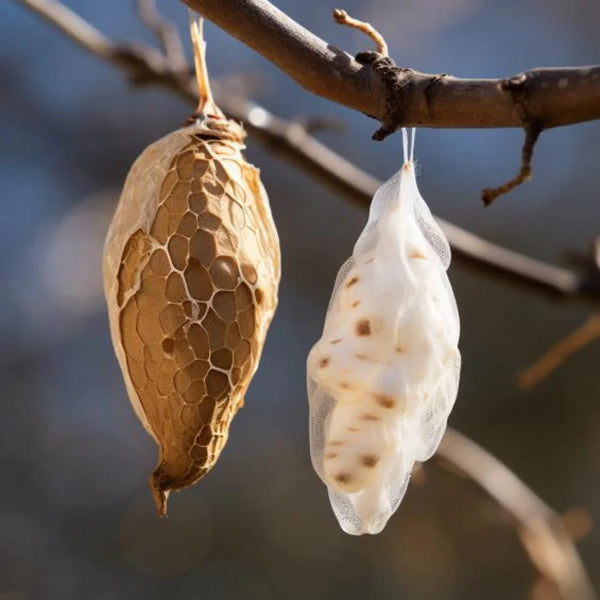
Also read: How is silk made ?
The different types of silk fibers
Mulberry silk: the queen of silks
mulberry silk, also called cultivated silk, comes from the mulberry bombyx. It is known for its fineness and its whiteness. It is the traditional reference silk.
The fibers are continuous because the silk thread is extracted from the cocoon without breaking. It takes the dye well and has a soft and shiny texture.
It is used for smooth fabrics such as crepe, satin, organza or taffeta. It is a very high quality silk.
Tussah silk: wild silk
Tussah silk comes from silkworms living in the wild, particularly in India and China. It is also called wild silk.
Its color is more dark and ecru. The threads are less regular and have a characteristic crumpled texture, due to breakage of the thread during harvest.
This silk is less fine but appreciated for its natural appearance. It is used for decoration or for specific clothing.
Synthetic silk: a modern alternative
synthetic silk is an artificial fiber made from synthetic materials: viscose, polyester , etc. It imitates the characteristics of natural silk.
This artificial silk has the advantage of being less expensive. However, it is less resistant and its texture is often less pleasant.
It can be recognized by its shiny appearance. It is used for inexpensive clothing and household linens.
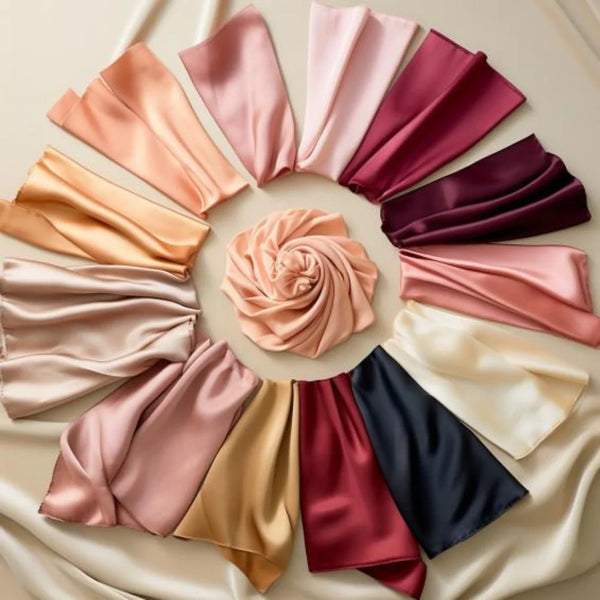
Also read: Natural silk or synthetic silk ?
Silk fabrics and their characteristics
Silk satin: soft and supple
The silk satin has a shiny and smooth face, due to the particular weave weaving. The warp threads float on the wrong side, which gives it flexibility and elasticity.
Known for its softness, satin can contain up to 14% elastane. It is used for lingerie, wedding dress but also furniture.
Silk chiffon: light and transparent
The muslin is a transparent silk with a very loose weave. It is made from very fine silk threads which give it lightness and flexibility.
It can be used to create airy dresses or sheers for interior decoration. It's the ideal silk for summer!
Silk crepe: textured and resistant
The silk crepe has a very characteristic crumpled appearance.It is woven from yarns of different twists and sizes, creating a relief effect.
Its irregular texture gives it great flexibility as well as good hold. Silk crepe is suitable for dresses or blouses with elegant drapes.
Discover silk weaving techniques
Jacquard weaving: complex and decorative
Jacquard weaving is a technique for creating complex patterns. The loom is equipped with a system of perforated cardboards which selects the threads.
This allows you to weave silks decorated with unique designs such as flowers, people or scenes. Jacquard silk was reserved for luxury clothing, but is now more accessible.
Jersey weave: elastic and comfortable
The technique of jersey weaving interweaves the weft threads to form mesh, hence the characteristic striated appearance of this fabric.
Jersey silk has great elasticity and follows the shape of the body. It offers optimal comfort for casual or sports clothing in silk.
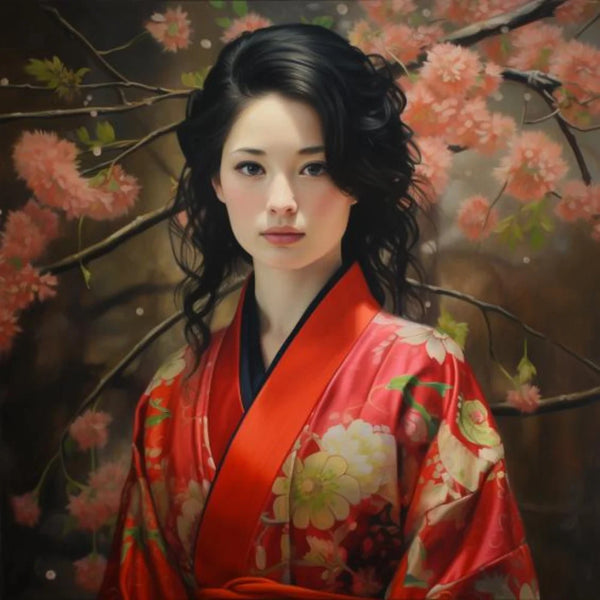
Recognizing real silk
How to tell if it's real silk ?
Several tests make it possible to recognize real silk:
-
Rub the fabric gently to feel the characteristic softness
-
Passthe thread to the flame: the silk burns and gives off a smell of burnt hair
-
Do the water drop test: on the silk, the stain spreads out in a halo
-
Look closely at the weaving: the silk has a shiny appearance and smooth threads
Tests to distinguish real silk from fake
Certain tests make it possible to differentiate real silk from ray of silk:
-
The touch: the silk is more soft and flexible
-
Creasing: silk creases more than ray
-
The smell of burning when in contact with the flame
-
The behavior in water: the silk makes haloes, the ray wet
Thus, even if the ray imitates silk, differences remain that a trained eye will be able to spot.
Also read: How to Recognize Real Natural Silk ?
The use of silk in Fashion and Decoration
Silk in the making of scarves
Silk is historically linked to the manufacture of scarves and squares. Its lightness, its fluidity and the brilliance of the colors make it the ideal material.
The patterns are made with the technique of jacquard weaving or printing. Silk twills, organzas and crepes are among the most used. The silk scarf is timeless.
Also read: What silk for your scarf ?
Silk for Clothing: From Lingerie to Evening Dresses
Silk is a noble material widely used in haute couture. It is found in wedding dresses, lingerie, ties and high-end bow ties.
satin, chiffon and organza are perfect for elegant or evening outfits. Silk gives fluidity while sophistication.
Silk in the Home: Bedding and Decoration
Silk sheets provide softness and comfort for high-end bedding. Combined with cotton flannel, silk is thermoregulatory.
In decoration, silk is used to make quilts, sheers and cushions. Natural fibers create a warm atmosphere.

Also read: What is the natural color of silk ?
The advantages and disadvantages of silk
Advantages
Soft and silky texture
Silk provides a unique sensation of softness to the touch. Its smooth and shiny surface offers a pleasant contact on the skin.
Breathable and thermo-regulating material
Thanks to its fibrous structure, silk is a breathable material that regulates humidity. It maintains the ideal temperature: cool in summer and warm in winter.
Resistant and solid over time
Silk benefits from great wear resistance. It is one of the strongest fibres, making it a durable textile. Quality silk lasts through the years without alteration.
Shiny and luxurious appearance
Silk has a very appreciated natural shine. Its shiny and shimmering appearance evokes luxury and refinement. She dresses with elegance.
Also read: What are the advantages and disadvantages of silk ?
Disadvantages
High price
Silk is an expensive material, due to the complex nature of its production. High quality silks fetch very high prices. The budget must be taken into account.
Delicate maintenance
Fragile, silk requires careful and gentle maintenance, generally dry or by hand. Too aggressive washing risks damaging it irreparably.
Poor stain resistance
Silk stains easily and requires immediate stain removal with suitable products. It is advisable to protect it.
May shrink and lose shape when washed
Washing, especially at high temperatures, can cause shrinkage and warping of the silk fabric.
Care of silk
Hand wash recommended
Prefer hand washing with a special silk shampoo. Avoid twisting or wrinkling the silk. Dry flat.
Do not expose to direct sunlight
The UV alters the shine of the silk and causes yellowing. Wash and dry your silks away from light.
Iron at low temperature
Use a protective soleplate and a iron that is not too hot so as not to damage the shine of the silk. Iron inside out.
Dry cleaning possible
Have dry clean your fragile silks such as muslin or veil. Choose a delicate program without drumming.
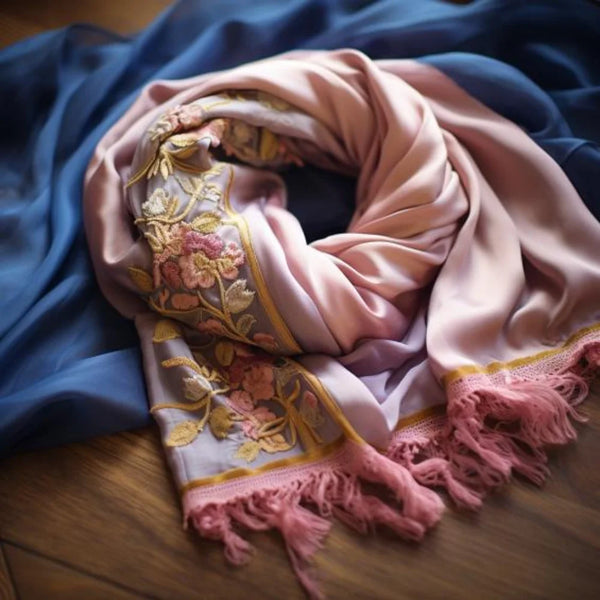
Also read: How to recognize silk ?
Silk and color
Silk dyeing: an ancestral art
Silk dyeing requires know-how passed down since Antiquity. Some traditional techniques are still used.
We distinguish between natural plant-based dyes, and more recent chemical dyes. Each process gives particular nuances and outfits.
How does silk retain colors ?
The fibrous structure of silk allows it to retain pigments well. Its smooth and uniform surface reveals colors radiantly.
The mordanted dyes form an insoluble colored complex, ensuring strength and shine over time. Silk reveals deep, shimmering shades.
Also read: Is silk warm ?
Satin: a special silk fabric
The characteristics of silk satin
Silk satin is recognizable by its soft texture, its shiny appearance and its pleasant touch. Its specific armor gives it flexibility and elasticity.
The more the satin contains floating warp threads on the reverse, the more fluid it is, which explains its qualities for lingerie or ballet. It is a refined silk.
The use of satin for hair
Satin is renowned for preserving the vitality and shine of hair. As a nightgown or turban, it prevents friction and limits static electricity.
Soft satin envelops the hair, protecting it from mechanical damage during sleep. Hair is supple and shiny when you wake up!
The difference between satin and silk
Satin designates a weaving technique, while silk designates the material. There is satin in other fibers.
But silk satin is the most prestigious, combining a satin feel and the finesse of silk. It is the pinnacle in terms of fluidity, shine and softness.
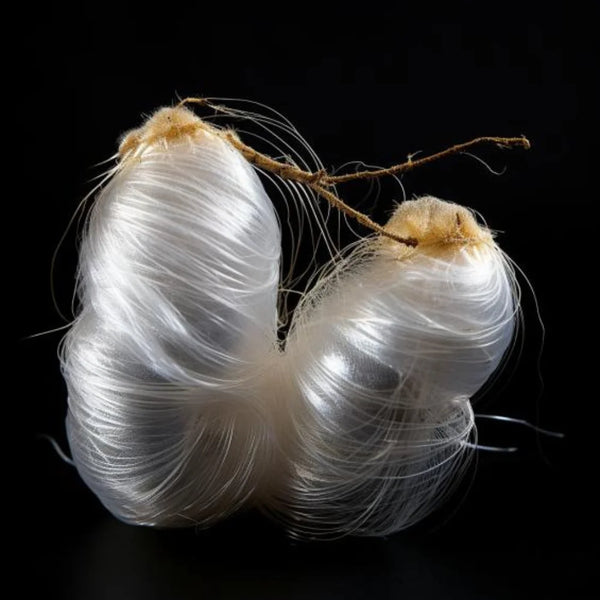
Also read: Satin or silk ?
Conclusion
Silk is a fascinating noble material. Its qualities of texture, comfort and shine make it an exceptional textile.
There are a wide variety of silks with unique characteristics. Their mastery requires rare know-how, transmitted and perfected for centuries.
Even today, silk remains a source of inspiration and material of choice for haute couture and high-end decoration.Let’s preserve this living heritage!
| Silk Type | Features | Usage | Maintenance |
|---|---|---|---|
| Mulberry silk | Finesse, whiteness, soft and shiny texture | Haute couture, wedding dresses, lingerie | Hand wash recommended, dry flat, iron at low temperature |
| Tussah silk | Darker shade, crinkled texture | Decoration, specific clothing | Hand wash, avoid direct exposure to sunlight |
| Synthetic silk | Less expensive, less resistant, less pleasant texture | Clothing and household linen at low prices | Can be machine washed at low temperature |
| Silk satin | Soft and supple texture, shiny and smooth side | Lingerie, wedding dresses, furnishings | Gentle wash, iron inside out at low temperature |
| Chiffon | Light, transparent, very thin | Aerial dresses, sheers for decoration | Hand wash, dry out of direct sunlight |
| Silk crepe | Crinkled appearance, irregular texture, supple | Dresses, elegant blouses | Dry cleaning recommended to preserve texture |
FAQ
How to tell if it's real silk ?
We recognize real silk thanks to its characteristic softness, its burning smell, the spreading halo of the drop of water and its smooth and shiny weave. Tests exist to differentiate it from imitations.
What is the difference between silk and silk satin ?
Silk refers to the material while satin is a weaving technique. But satin frequently uses silk for its finesse and flexibility. Silk satin is particularly luxurious.
What is the most beautiful silk ?
The most prestigious is mulberry silk, or cultivated silk, renowned for its immaculate whiteness and great finesse. But wild silk has a more raw and natural charm. The choice depends on taste!
What silk for a scarf ?
Silk twills, organzas and silk crepes are perfect for scarves thanks to their fluidity, transparency and shine which enhance the patterns. Silk is inseparable from this elegant accessory.
Where does silk come from ?
Contrary to popular belief, silk is produced by an animal, the mulberry bombyx. This silkworm spins a cocoon in which it carries out its metamorphosis, from which the precious silk fiber is extracted.
How is silk made ?
The bombyx secretes fibroin, a protein which solidifies on contact with air to form silk thread. Rearing the worms, harvesting the cocoons then spinning to obtain the thread are delicate steps.
Satin or silk ?
It's difficult to decide! Satin offers its very particular touch. Silk exudes maximum softness. To combine the best of both, opt for a beautiful silk satin.
Silk or satin sheet ?
In bedding, satin provides fluidity and softness, silk provides a soft wrap. Combined in satin silk sheet, they combine super soft satin touch and absolute comfort for a restorative night.
Satin or silk for hair ?
Satin is excellent protection for hair at night. Its softness prevents friction and static electricity. But some prefer the even more delicate contact of silk with a handkerchief or scarf.
How is silk made ?
Making silk requires the careful rearing of silkworms, harvesting the cocoons, spinning to extract the precious thread, then dyeing and weaving to obtain the final silk fabric.
Updated February 21, 2024







